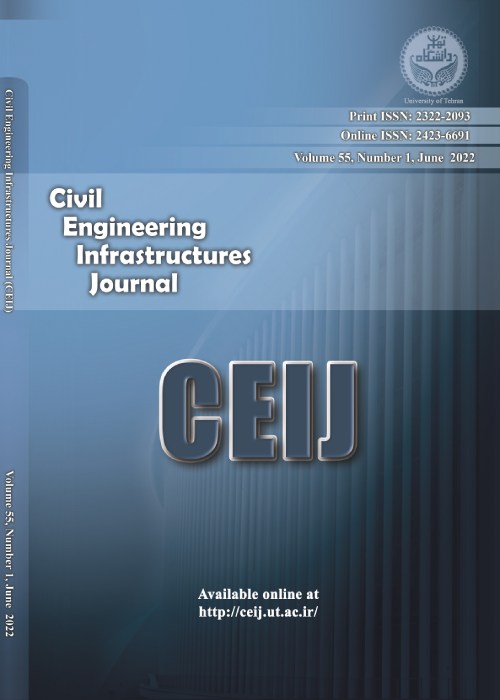The Deformation Study of Reinforced Earth Walls against Earthquake
Abstract:
The reinforced soil walls have shown an acceptable seismic behavior in most earthquakes. However, they can show a considerable deformation which has been studied by many researchers. The presented research aims to study different parameters which affect the seismic deformation of reinforced soil walls. In the research, five different series of tests conducted on reinforced soil wall models on a shaking table and the effects of soil density, embedded depth, length of geogrids, stiffness of geogrids and friction angle between soil and geogrids were investigated. The behavior of the models was monitored using four accelerometers and four LVDTs in each test. The methodology of the presented research could be summarized as follows: 1. The increase of geogrids length from 0.7H to 0.9H could decrease horizontal deformations up to 50%. It also significantly reduces the amplification of the acceleration. 2. Embedded depth has an important effect on reducing the vertical deformation around the developed failure zone. 3. When stiff reinforcements with relatively high tensile strength are used, the pullout mode of failure happens rather than yielding of reinforcements. The stiffness of geogrids, in this case, does not have any effect on seismic deformation. 4. The friction angle between the soil and the geogrids had a significant effect on seismic deformations. 5. Two modes of deformation, named bulging and tilting, have been investigated in the study. These modes are related to the overall stiffness of the system and the dynamic wave characteristics. The overall stiffness of the reinforced soil walls is mainly related to the soil density, geometrical properties of the wall; and also the number of reinforcement layers, length and mechanical properties of geogrids. The paper concludes that it is possible to design the reinforced soil walls in a way which decreases the horizontal and the vertical deformations up to a requested performance design level for seismic loads; however it needs more research. In this research it is found that the most considerable parameters which have effect on seismic deformations are soil density, physical and mechanical characteristics of geogrids (length, tensile strength, friction angle between soil and geogrids) and embedded depth. On the other hand, the characteristics of the dynamic waves, such as the amplitude, duration and the seismic wave frequency content, may have also effect on seismic deformations which also needs more research.
Language:
Persian
Published:
Civil Engineering Infrastructures Journal, Volume:44 Issue: 5, 2011
Page:
705
magiran.com/p836055
دانلود و مطالعه متن این مقاله با یکی از روشهای زیر امکان پذیر است:
اشتراک شخصی
با عضویت و پرداخت آنلاین حق اشتراک یکساله به مبلغ 1,390,000ريال میتوانید 70 عنوان مطلب دانلود کنید!
اشتراک سازمانی
به کتابخانه دانشگاه یا محل کار خود پیشنهاد کنید تا اشتراک سازمانی این پایگاه را برای دسترسی نامحدود همه کاربران به متن مطالب تهیه نمایند!
توجه!
- حق عضویت دریافتی صرف حمایت از نشریات عضو و نگهداری، تکمیل و توسعه مگیران میشود.
- پرداخت حق اشتراک و دانلود مقالات اجازه بازنشر آن در سایر رسانههای چاپی و دیجیتال را به کاربر نمیدهد.
In order to view content subscription is required
Personal subscription
Subscribe magiran.com for 70 € euros via PayPal and download 70 articles during a year.
Organization subscription
Please contact us to subscribe your university or library for unlimited access!


